OneUp V2 Carbon Handlebar
Width Options: 760 mm and 800 mm (tested)
Rise Options: 20 mm, 35 mm (tested), 50 mm (800 mm only)
Bar Dimensions: 35 mm clamp, 8° backsweep, 5° upsweep
Stated Weight: 235 g (800 x 35 mm)
Blister’s Measured Weight: 237 g (800 x 35 mm)
MSRP: $159.99 USD
Bolted to: Kavenz VHP 16 V7 & Trek Top Fuel
Reviewer: 6’, 160 lbs / 183 cm, 72.6 kg
Test Duration: 5 months
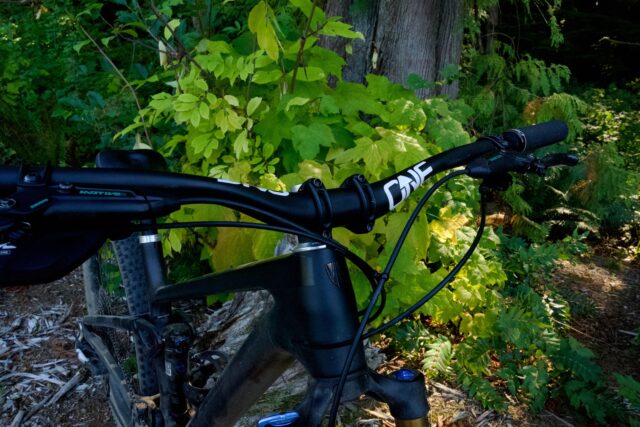
Intro
While there are plenty of grumpy riders [tough, but fair – Ed.] who think the 35 mm handlebar clamp standard didn’t need to happen in the first place, it’s here, and it’s here to stay. A lot of the initial marketing was around increased stiffness as compared to the 31.8 mm standard, and the 35 mm clamp definitely achieved that — though often to a fault, creating unwelcome levels of feedback and hand fatigue.
OneUp has made a name for itself in cooking up crafty solutions, and that’s just what they did when they released their original handlebar. By using a patented flattened oval shape at either side of the clamping area, OneUp claimed to have maintained the steering precision of the larger diameter 35 mm clamp standard while offering more compliance. And based on my prior experiences, their V1 bar certainly felt a lot less chattery compared to other 35 mm clamp options out there.
With the recently released V2 model, OneUp has brought in some new sizes, while supposedly making the bar even more compliant than before. But does the V2 feel any different on the trail? Let’s get into our findings after five months riding it.
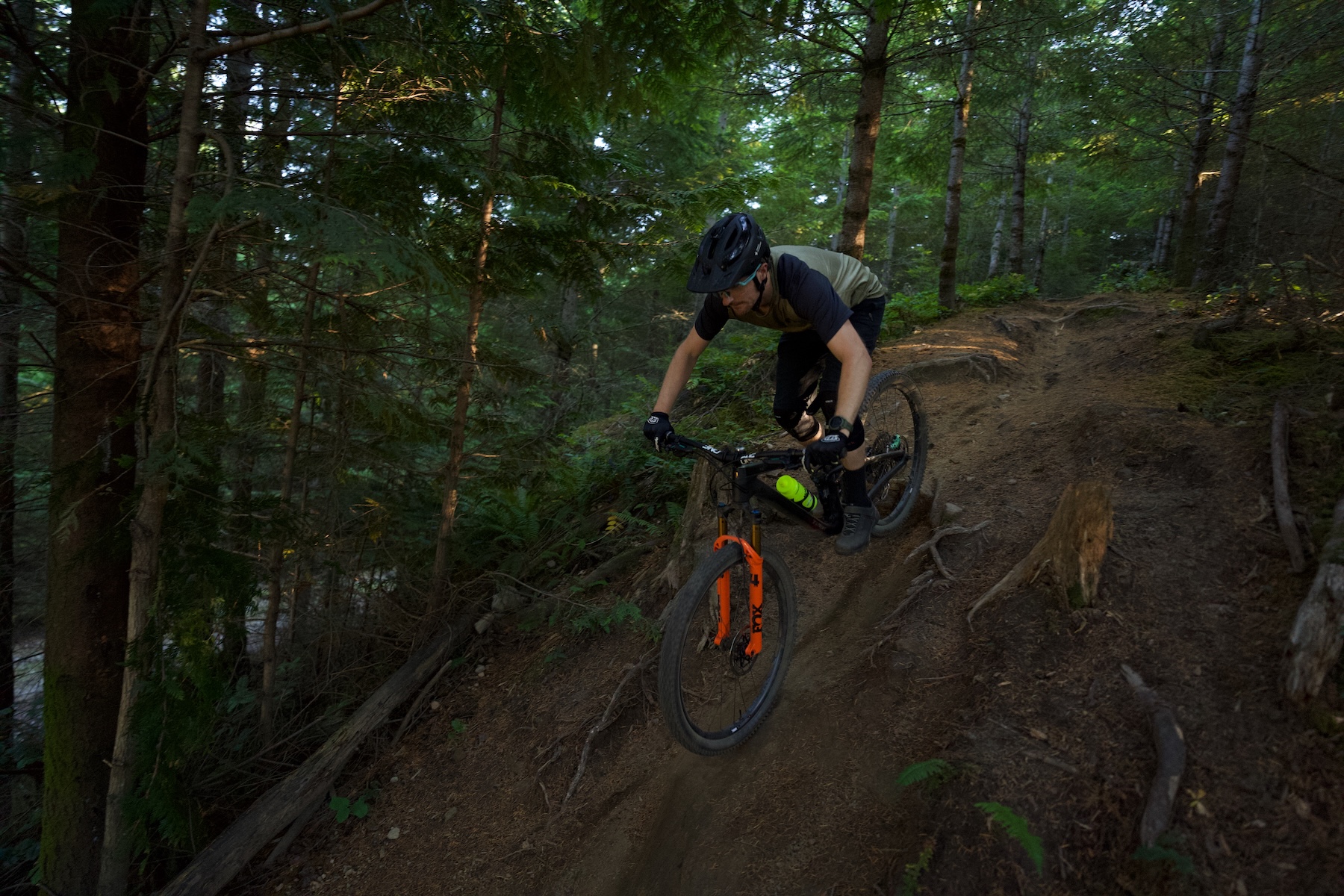
Design
At first glance, the V2 handlebar from OneUp looks basically identical to the first version. There’s still a distinct flattened shape along the primary bend of the bar where it tapers from the clamping area, which looks a bit odd at first and can mess with your head a bit when adjusting handlebar roll (at least, it messed with mine).
Looking a bit closer, though, OneUp seems to have further flattened that profile to get even more vertical flex out of the bar. OneUp claims that their original V1 bar saw a 21% increase in vertical compliance over “the most popular carbon handlebars on the market”, which doesn’t mean all that much without specific benchmarks, but the the more telling statistic is that their new V2 bar is supposedly 13% more compliant than the V1 in its full 800 mm width.
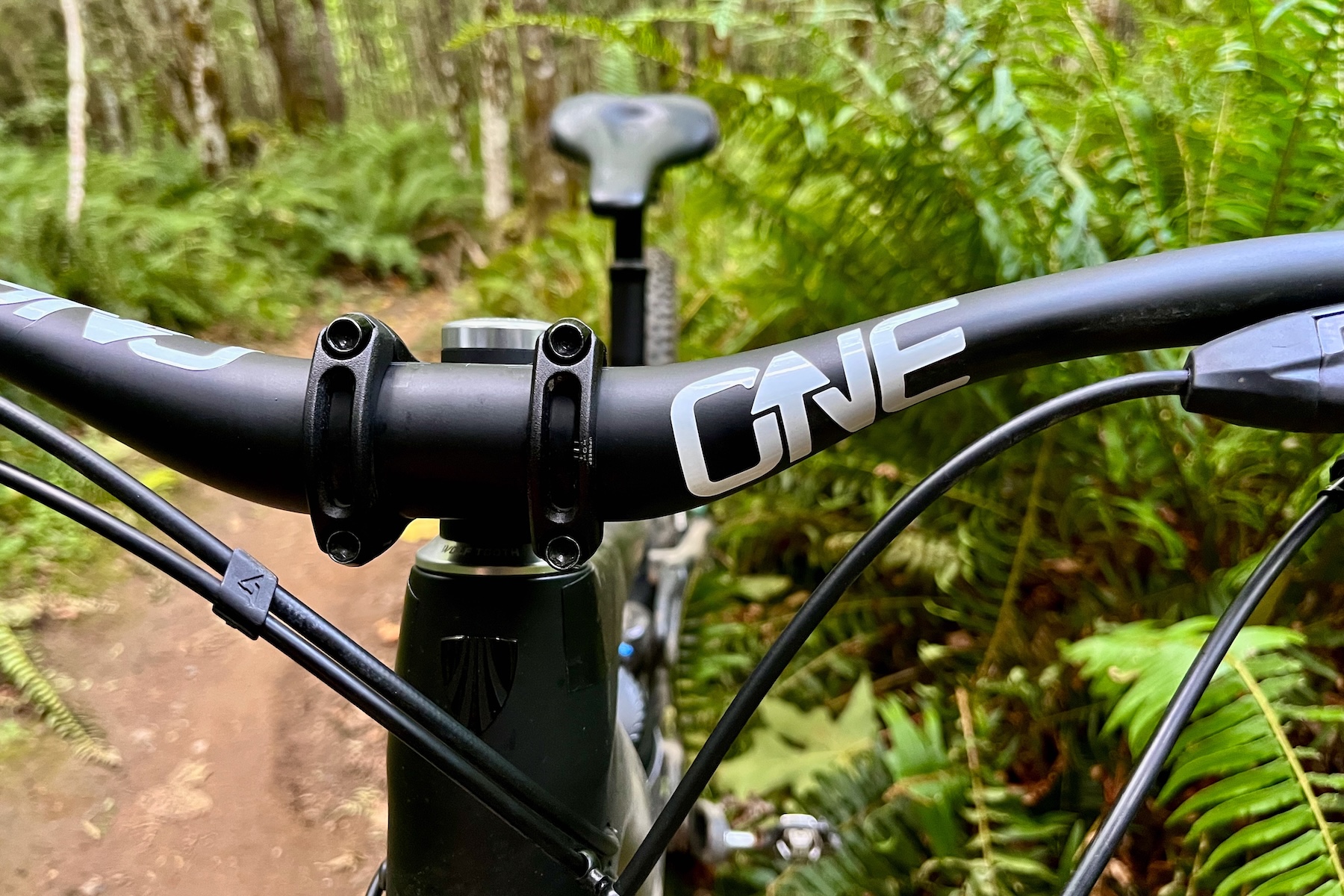
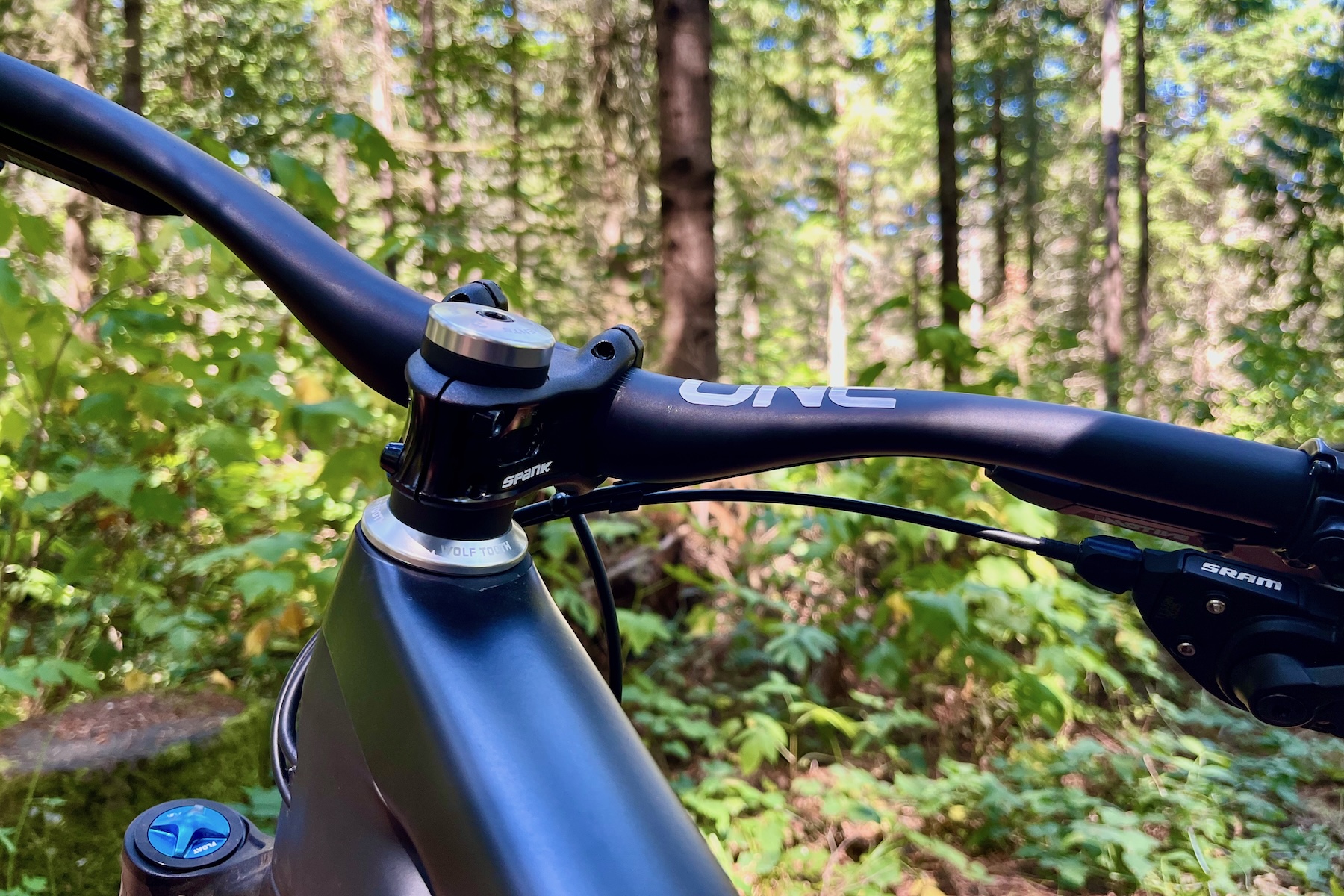
Speaking of width, while the V1 only came in an 800 mm option, one of the big updates for V2 is the addition of a dedicated 760 mm width bar with its own flex characteristic. Cutting a bar down from 800 mm, which many of us do, reduces your leverage over those flex zones, effectively stiffening the feel as you go narrower. Recognizing this, OneUp went ahead and created a 760 mm version with a different construction that is supposedly 33% more compliant than an equivalently cut version of the V1 bar.
Higher-rise bars have seemingly been a hot item in the industry as of late, and OneUp has taken the opportunity to crank up the V2 bar with a new 50 mm rise option. Those ape hangers are only available in the 800 mm width, while the shorter 20 mm and 35 mm rises come in 800 mm or the new 760 mm size. All sizes are certified by EFBE’s Cat-5 Gravity Tri-Test, which is regarded as one of the most stringent testing standards in the bike industry for strength.
On-Trail Performance
I have a good friend who can’t go a day of lift-accessed riding without achieving what we call “the claw” — arm pump and hand cramping of such a degree that his hands get somewhat stuck in a gripped position for a few hours after riding. As handy as that is for a secure grip on your post-ride beverage of choice, arm pump really sucks. Despite not being particularly susceptible to it myself, I’ve been astonished (in a bad way) by how stiff some of the 35 mm clamp bars out there can feel, and how much they abuse my hands over the course of a day of riding.
I’ve been spending time on the 800 mm wide version with a 35 mm rise since the spring, which I hacked down to my preferred 780 mm width. In my 5 months of testing the OneUp V2 bar, I’ve bolted it to a Fox 40 for Whistler Bike Park trails, and also ridden it on dusty, long rides aboard a 120 mm travel XC bike. OneUp’s 8° backsweep and 5° upsweep shape falls in line with my typical preferences, making it easy to forget about the bar shape and focus on the performance.
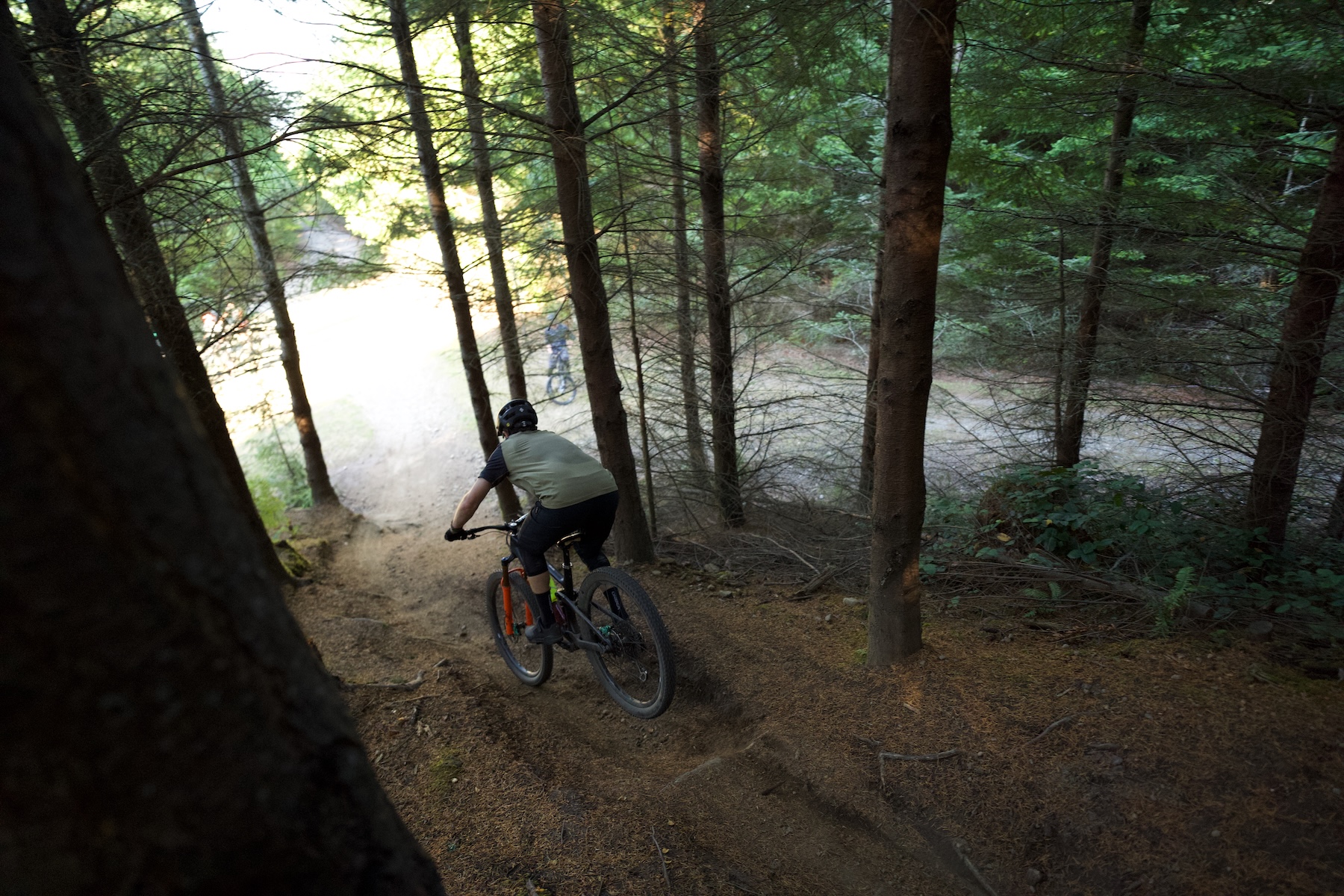
Almost all of our test bikes these days show up with 35 mm clamp handlebars, and compared to some I’ve been on lately, the OneUp V2 bar was a welcome change. The difference in compliance over other 35 mm clamp bars is quite noticeable, but not in a way that the bar feels vague or noodly — instead, there’s a pleasant reduction in feedback on rough and chattery trails. Like their predecessor, the OneUp V2 handlebar helps to keep my hands and forearms feeling fresher than other 35 mm options.
As with the V1 bar, OneUp claims higher steering stiffness for the V2 over other carbon bars, but I can’t say I’ve noticed all that much of a difference or advantage in that area. Heavier riders might experience this a bit differently, but I find the comfort and vibration-muting traits of the V2 bar to be the real selling point.
At our measured weight of 237 g, and likely a few grams lighter once I cut it down, the V2 bar is also pretty light. That’s not something I care much about on an Enduro bike, but I didn’t mind shedding ~100 g of weight over the aluminum bar I was previously running on my XC bike.
A lot of folks are likely reading this and wondering whether the V2 handlebar stands as an upgrade over the V1. While I think the V2 is perhaps slightly more comfortable in back-to-back testing, I still think the V1 is quite good, and it happens to be heavily discounted thanks to the release of the V2. Areas where the V2 will differentiate itself are clearly in the new 50 mm rise option, but also for the new 760 mm width option. For riders who prefer a 760 mm or narrower bar, I suspect that the V2 would offer more compliance over the V1.
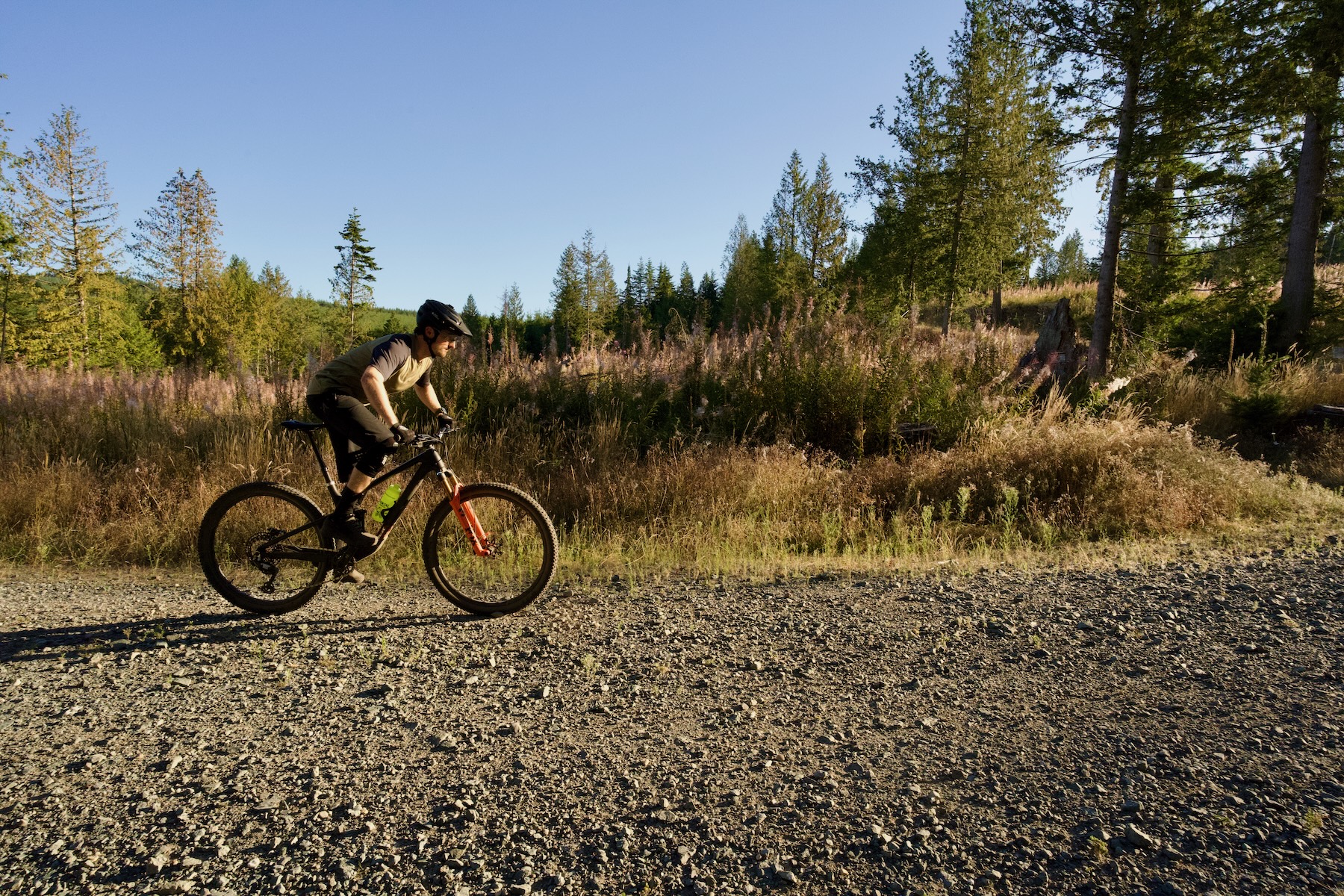
I still think that my favorite 31.8 mm handlebars (such as the Chromag Fubars OSX and Deity BF800) bring even more compliance, though, and I also prefer aluminum for its slightly better resistance to impact damage. That said, the OneUp V2 bar manages to get even closer to the flex of my preferred 31.8 mm format while feeling ever so slightly more precise in its steering, and bringing a pretty unique look.
Bottom Line
So, where does that leave us with the OneUp V2 bar? Well, if you find yourself preferring 35 mm handlebars for their steering stiffness, aesthetics, or you simply don’t want to buy a new stem, the OneUp V2 is definitely the most compliant option I’ve tried. The V1 is still no slouch, though, and I’m not sure I would pony up the additional money to upgrade until my V1 bar needed replacement. Even so, compared to the sea of 35 mm handlebars available at the moment, it seems to be in a class of its own.

I’m a heavy rider (250lbs) with bad hands. My hands don’t open all they way, I have that condition John Elway has.
I ride OneUp V1’s and love them, I definitely notice the difference. I look forward to trying the V2 with the higher rise, mostly just to try them. My worry is that maybe they may be too soft at my weight, but it’s worth a try. I already love the brand just for the bars so I don’t mind spending a little more to try a product if there’s to see if it works better. It’s cheaper than hand surgery.